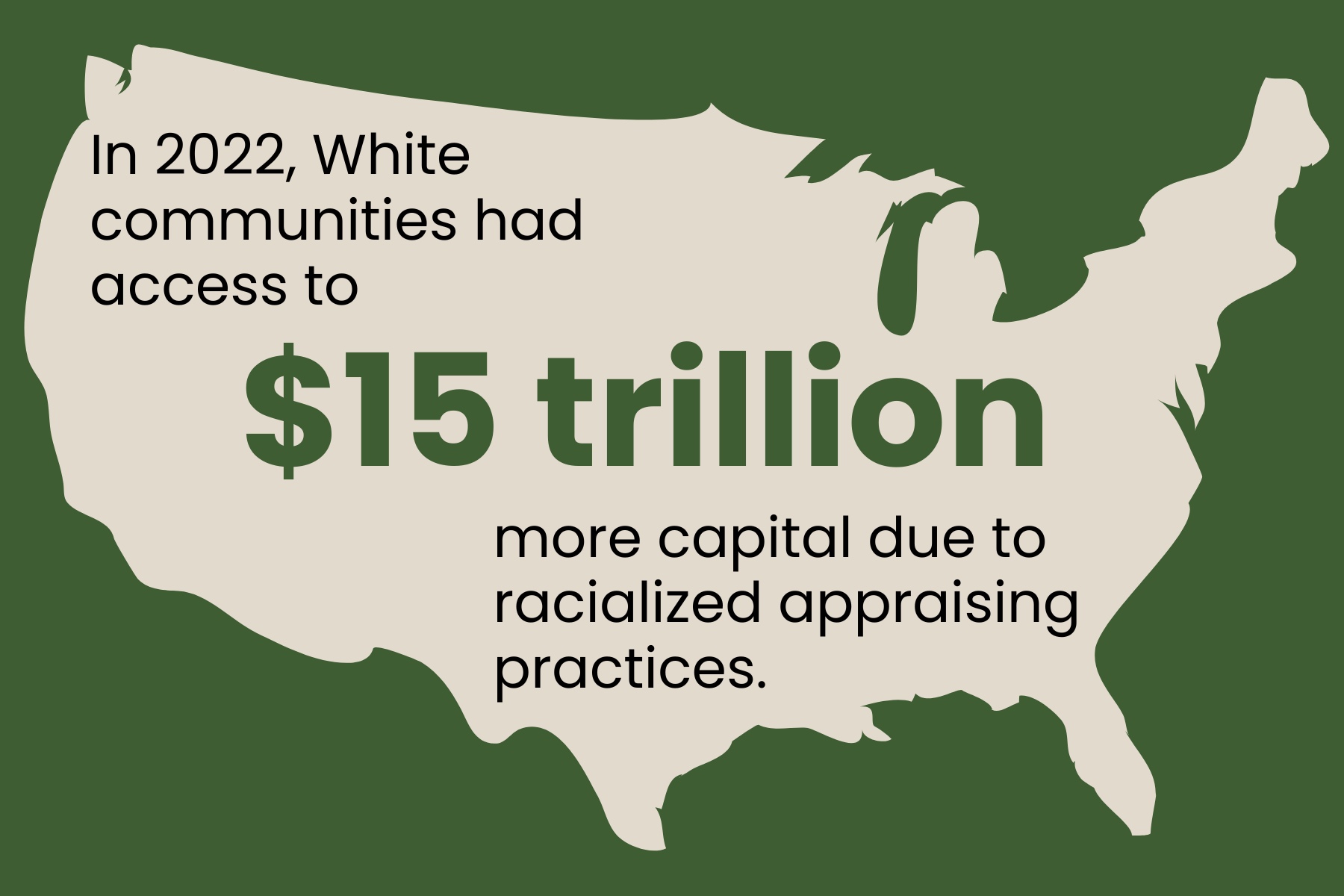A Decade In and I’m Still Shook
By Junia Howell | May 16, 2023
3 minute read
I have spent thousands of hours over the last ten years wading through data to quantify the harmful effects of White supremacy. Dataset after dataset, analysis after analysis, year after year, the findings remain the same: U.S. policy and practices advantage White residents at the expense of people of color. Somehow, every time I use new data, I find myself amazed and saddened by the extent and persistence of our nation’s racial inequality.
Last month, that new data was the recently released 2022 Uniform Appraisal Dataset (UAD). It had only been a few months since I analyzed the 2013-2021 UAD data, and structural inequities don’t change much in one calendar year, so I didn’t expect the new data to emotionally affect me. But I was wrong.
A Bit of Background
The UAD is the nation’s most comprehensive collection of appraisal reports. For years it was only available to select government workers, but that changed last October. After sustained advocacy and White House initiatives, the Federal Housing Finance Agency (FHFA) released the 2013-2021 data.
My collaborator, Elizabeth Korver-Glenn, and I analyzed the new data and produced the first national report on neighborhood racial inequality in appraisals using licensed appraisers’ own reports. Our findings mirrored our previous research on the appraisal industry, so the mere existence of the inequity didn’t surprise me. But I was surprised by how much worse the inequality had gotten, especially during the pandemic. In just two years (2019 to 2021), homes in White neighborhoods appreciated $76,000 more than identical homes in comparable communities of color—directly exacerbating the racial wealth gap.
Latest Findings
Last month, the FHFA released the 2022 UAD data, allowing me to examine the most recent trends.
As expected, appraisers in 2022 continued to evaluate homes in White neighborhoods as twice as valuable as comparable homes in similar communities of color. By “comparable communities,” I mean both neighborhoods are located in the same metropolitan area, they have similar housing stock in the same condition, their residents have the same level of socioeconomic status (e.g., same rates of poverty, homeownership, and employment), and the areas have the same number of parks, retail shops, entertainment establishments, and services.
In other words, even when we ensure everything about the individual houses and neighborhoods are the same, homes in White neighborhoods in 2022 were appraised as worth $408,000 more simply because White people lived there.
This number is staggering. It conforms to the patterns found in my previous research, but it’s still striking to see. Moreover, this number was greater than the inequality in 2021, meaning that racial inequality in appraised values rose for the fifth year in a row.
In fact, since I started studying racial inequality in appraisals ten years ago, the gap between home values in White neighborhoods and communities of color has increased by $200,000.
This shook me.
For some context, from 1980 to 2010, the racial appraisal gap expanded $5,000 a year. But in the last decade, this inequality was growing, on average, $20,000 a year. This is an astronomical rate that has real consequences for families and communities.
For families, the growing racial inequality in home values means expanding racial wealth gaps. On average, homes in White neighborhoods appreciated $400,000 more since 1980 than comparable homes in similar communities of color.
Collectively, the racial inequality in appraisals has resulted in White communities having access to $15 trillion more in capital simply because of the presence of White residents.
These numbers might have been predictable, but that does not change their emotional impact. The inequities are large and growing, but they are not a foregone conclusion. We have created this inequality and we can fix it.


